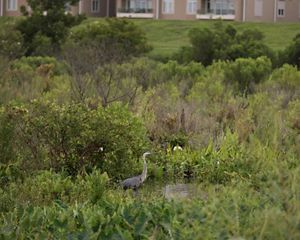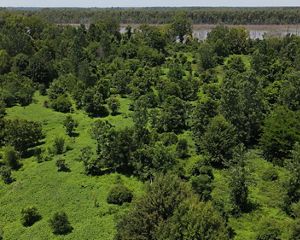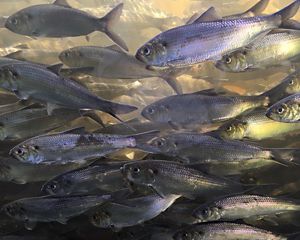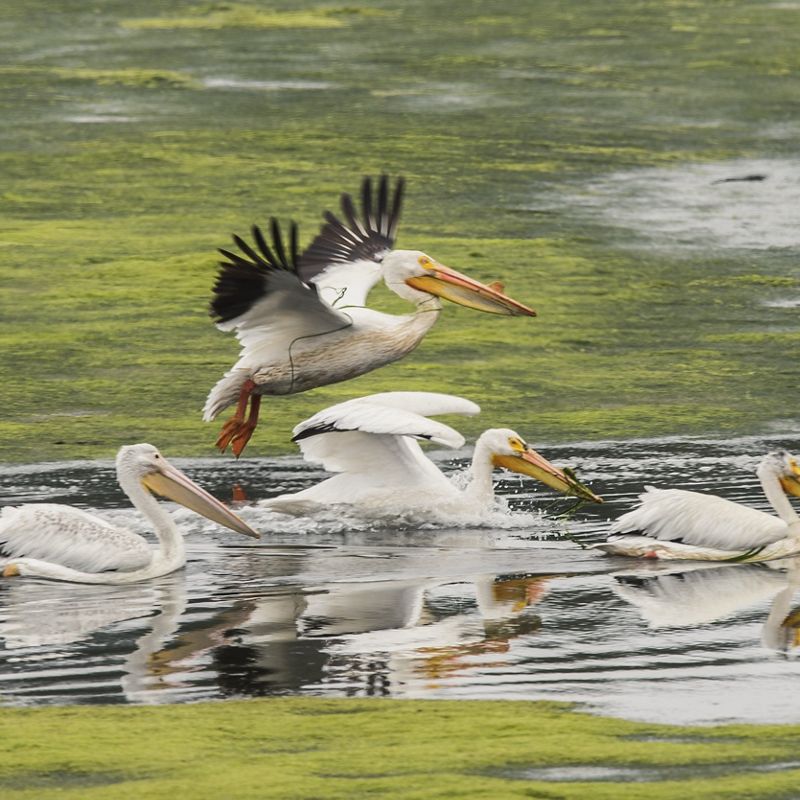
On spring and summer days, visitors to the Erie Marsh Preserve on North Maumee Bay in western Lake Erie, Mich., often see a group of large white birds soaring overhead, their 10-foot wingspans tipped in black. These are the American white pelicans that have established a nesting site in nearby Saginaw Bay, a stop on the Mississippi Flyway bird migration route that follows the Mississippi, Missouri and Lower Ohio Rivers.
These birds, which breed in inland freshwater lakes and streams in summer, are one of many species that depend on coastal wetlands for their wellbeing. Coastal wetlands used to blanket southeastern Michigan’s coastline, but now have been whittled down by development, invasive species and climate change to a mere 5% of their former extent.
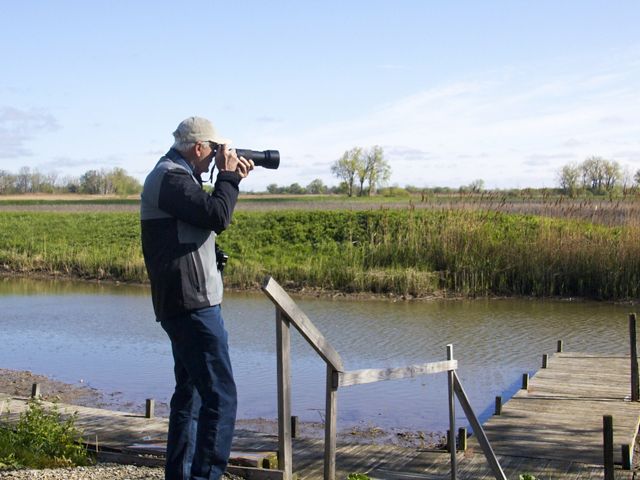
Erie Marsh is the site of 11% of the remaining marshland in southeastern Michigan. It is one of the largest marshes on Lake Erie and a vital source of safety, food and nesting sites for migrating birds, as well as habitat and protection for numerous plant and animal species. A large-scale restoration project of the preserve, led by The Nature Conservancy and funded in part by the Infrastructure Investment and Jobs Act, ensures that this vital resource will be protected for years to come. It also gives local human communities more opportunities to enjoy this diverse coastal environment.
Erie Marsh Preserve consists of around 2,200 acres of wetland habitat that had been, until recently, divided from Lake Erie by barrier dikes since the 1950s. The preserve was a highly altered, degraded habitat when TNC acquired it in 1978. In the intervening decades, TNC has worked to keep it safe from the ravages that have decimated most of Michigan’s other wetlands, such as development and invasive species.

A Restored Marsh, 12 Years in the Making
To ensure that Erie Marsh Preserve could thrive into the future and continue acting as a refuge and resource to species of all kinds, TNC initiated a large-scale restoration project at the preserve in 2011. The 12-year effort to restore 946 acres of degraded coastal wetlands at Erie Marsh is improving the overall quality of the wetland, providing access to key spawning areas for fish from Lake Erie and controlling invasive species to promote habitat diversity.
The project, which took place in four phases, involved constructing a system of dikes and levees to manipulate and manage the water within the preserve. This infrastructure now undergirds a network of 9.5 miles of walking trails criss-crossing the wetland, which people can freely access to exercise, birdwatch and enjoy the picturesque natural habitat.
A major milestone occurred during the second phase, in 2013, when a team installed a pump structure to connect Erie Marsh Preserve to North Maumee Bay. For the first time in more than half a century, water was able to flow into Erie Marsh, allowing fish to use the habitat for spawning and feeding. This connectivity and the dike infrastructure that enables it are central to the success of the project, as they not only provide safe passage to fish but also allow site managers to control water levels and flow to promote the health of the habitat as a whole.
Robust Collaboration and Support
TNC collaborates with a network of partners in Michigan that are all working to preserve habitats similar to the Erie Marsh Preserve. These partnerships, called Cooperative Weed Management or Cooperative Invasive Species Management Areas, seek to reduce invasive species populations, improve unique and sensitive habitats, make these areas more accessible to local residents and provide outreach and education about conservation and land management. TNC’s work to restore Erie Marsh took place within the Detroit River - Western Lake Erie CWMA.
Funding for the project came from a wide array of supporters, including the National Fish and Wildlife Foundation’s Great Lakes Restoration Initiative, which is supported in part by the Infrastructure Investment and Jobs Act.
Other supporters of the project included DTE Energy Foundation; Ducks Unlimited; the Michigan Department of Environment, Great Lakes, and Energy; Erie Shooting and Fishing Club; the National Oceanic and Atmospheric Administration; the U.S. Fish and Wildlife Service’s Detroit River International Wildlife Refuge; the Walters Family Foundation; Carol and Peter Walters and many other individual donors.

Benefits for Nature and Humans Alike
Healthy natural ecosystems offer more than just pretty vistas and a food source for wildlife. Nature provides a wide range of benefits to wildlife and human communities alike, including clean air, clean water, healthy food, carbon sequestration and heat mitigation.
In the case of Erie Marsh Preserve, a newly healthy natural landscape is offering a safe home to countless species, nesting sites and migration stopovers for birds of all kind and support for the robust food web of the larger inland ecosystem.
For local residents, Lake Erie’s wetlands offer a wealth of benefits. These habitats help support a $4.6-million commercial fishery in the U.S. and a $33-milion one in Canada. In western Lake Erie alone, recreational fishing brings in $1.4 billion each year. The lake’s wetlands also filter pollutants from the water, buffer coastlines from storms and help absorb floodwaters. As extreme rain events and deep droughts become more common in this region, wetland restoration is becoming ever-more vital.
Stay Informed
Sign up to receive monthly stories and policy updates from TNC
